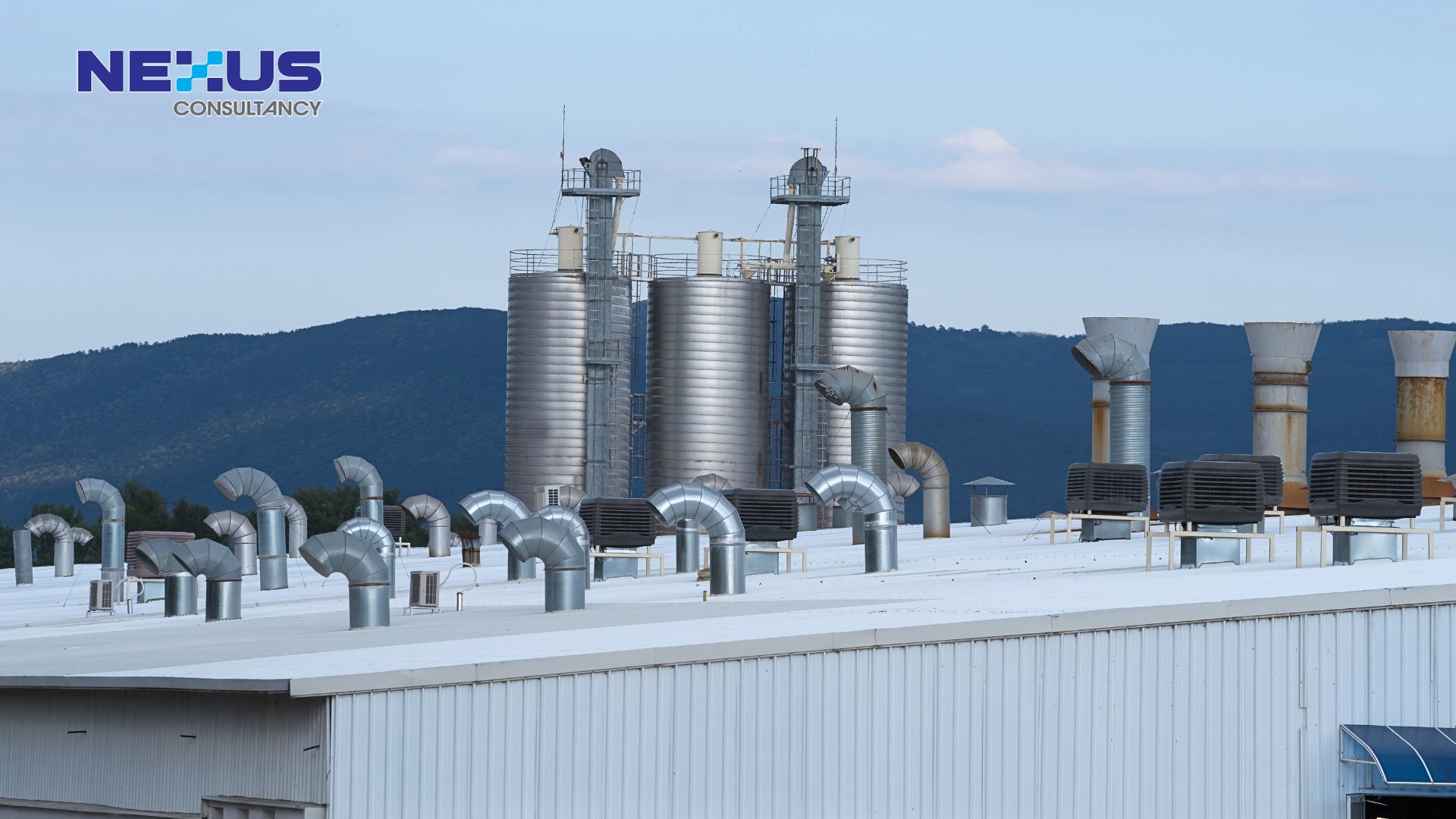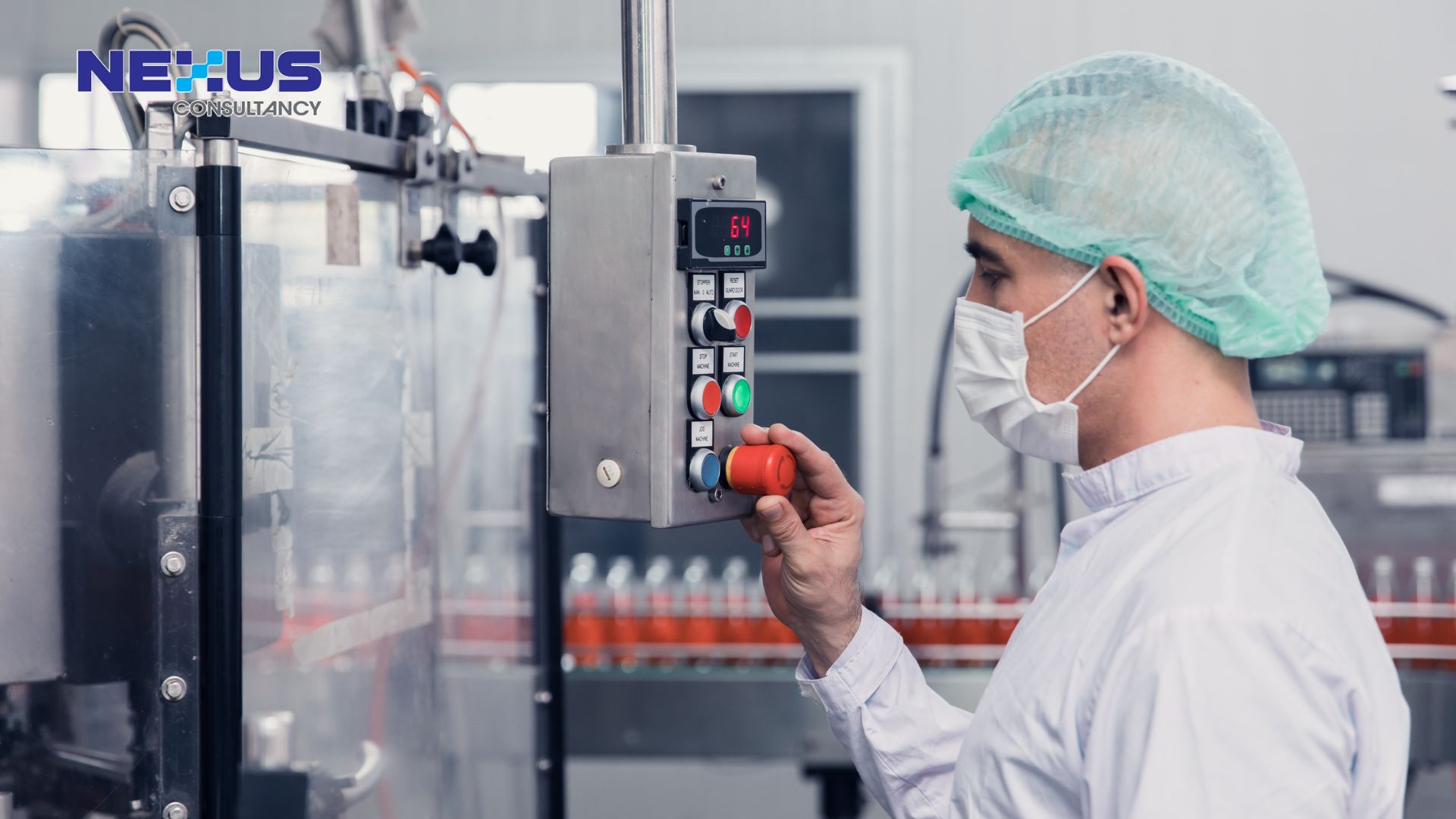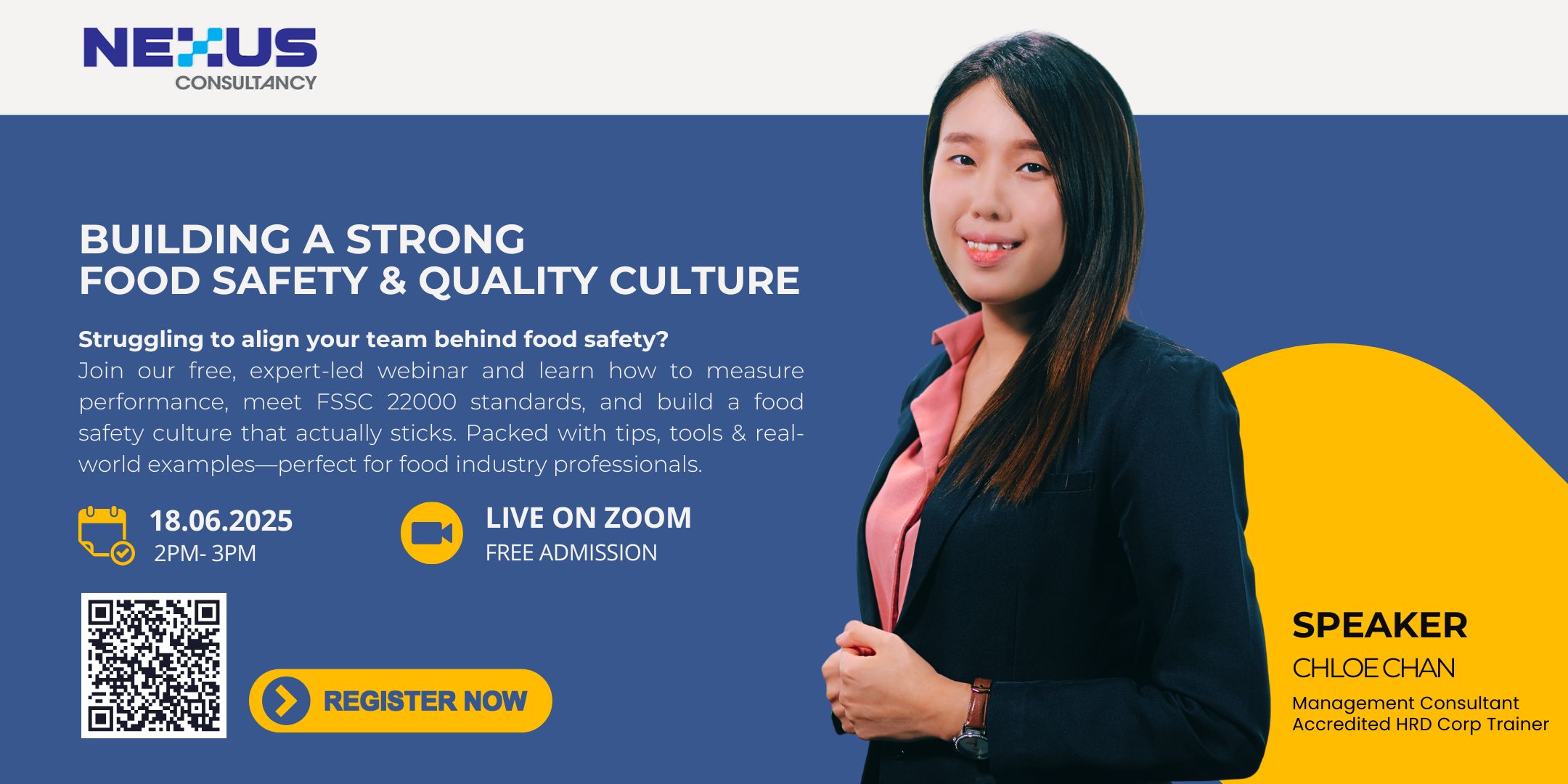
Danielle Tan
Chief Operating Officer
Learn why food safety culture is a must-have for compliance, brand trust, and growth—backed by ISO consultants in Malaysia.

In today’s competitive and tightly regulated food manufacturing landscape, compliance alone is no longer enough. To consistently produce safe food, manufacturers must go beyond ticking checkboxes—they must build a strong, sustainable food safety culture.
But what exactly is food safety culture, and why is it now essential for companies seeking ISO 22000 food safety certification in Malaysia?
💡 If you’re facing audit risks or inconsistent compliance, our certified ISO consultants in Malaysia are here to help.
What Is Food Safety Culture?
Food safety culture refers to the shared values, beliefs, and daily behaviors in a food organization that determine how food safety is practiced. It’s not just about SOPs—it’s about how people consistently act when no one is watching.
A strong culture means everyone—from senior management to line operators—understands the importance of safe food practices and feels responsible for upholding them.
💡 Need help building culture from the ground up? Learn how our ISO food safety consultant for SMEs can guide your team. Contact us now.
Why Food Safety Culture Matters More Than Ever
1. Rising Consumer Expectations
Consumers are more informed and health-conscious than ever before. One food safety incident can severely damage a brand’s reputation and customer trust. In an age where news spreads instantly via social media, fostering a culture that prevents mistakes is essential.
2. Stricter Regulatory and Certification Requirements
Global food safety standards such as FSSC 22000 Version 6, BRCGS, and SQF have now embedded food safety culture into their certification frameworks. For example, FSSC 22000 v6, effective from April 2024, explicitly requires organizations to demonstrate how they promote food safety culture through leadership commitment, employee engagement, and communication.
✅ Our experienced FSSC 22000 consultants in Malaysia will help ensure your culture aligns with audit expectations.
3. Hidden Costs of Poor Culture
A weak food safety culture often results in non-compliance, product recalls, contamination incidents, and increased inspection failures. These aren’t just operational risks—they’re financial ones. Investing in food safety culture helps reduce downtime, rework, and reputational damage.
4. Workforce Challenges in Food Manufacturing
High turnover, temporary staff, and skill gaps are common in food manufacturing. A strong food safety culture helps mitigate these challenges by embedding safe behaviors and consistent expectations across all levels, regardless of tenure or role.
Key Elements of a Strong Food Safety Culture
To build and sustain a food safety culture, food manufacturers should focus on these pillars:
1. Leadership Commitment
Food safety starts at the top. Leaders must walk the talk by prioritizing food safety in meetings, decision-making, and resource allocation. Visible involvement from top management sets the tone for the entire organization.
2. Employee Engagement
Empowered employees are more likely to report hazards, speak up about unsafe practices, and follow procedures. Regular training, open communication, and feedback loops can enhance ownership and awareness on the shop floor.
3. Communication
Clear and consistent messaging about food safety expectations, incidents, and achievements reinforces its importance. Communication should be two-way—allowing employees to share their concerns or suggestions without fear.
4. Accountability and Recognition
Set clear food safety responsibilities for each role and hold people accountable. At the same time, recognize and reward employees who demonstrate exemplary food safety behaviors.
5. Continuous Improvement
Culture isn’t built in a day. It evolves through regular monitoring, audits, surveys, and behavioral observations. Use these tools to identify gaps and take corrective actions that reinforce your desired culture.
✅ Start now with our HACCP system implementation and internal audit services to set your culture on the right path.
How to Measure Food Safety Culture
Measuring food safety culture might seem abstract, but there are practical methods:
1. Employee surveys assessing knowledge, attitudes, and behaviors.
2. Interviews and focus groups to explore perceptions of food safety.
3. Behavioral observations during daily operations.
4. Internal audits focusing on not just documentation but actual practice.
5. Key performance indicators (KPIs) related to training completion, incident reports, and corrective action closure rates.
These data points help food manufacturers track cultural progress and identify areas needing reinforcement.
💡 Want measurable insights into your current culture? Our team provides Malaysian food safety audit services and gap analysis support. Contact us now.

Conclusion: Culture Is the Real Competitive Advantage
Food safety isn’t just the QA department’s job. It’s an organizational mindset. For food manufacturers navigating increasingly complex supply chains and regulatory landscapes, cultivating a strong food safety culture is no longer optional—it’s a strategic advantage.
When food safety becomes part of the DNA of your organization, you don’t just comply—you excel. You gain customer trust, protect your brand, and lay the foundation for sustainable business growth.
Take the First Step Toward a Safer, Stronger Organization
Struggling with inconsistent audits or culture that doesn’t stick?
Let our ISO 22000 consultants help you build a food safety culture that drives compliance, growth, and trust.
🎯 Benefits of Working With Us:
✔️ Align with FSSC 22000 v6 and ISO 22000:2018
✔️ Train your team with HRDC-claimable modules
✔️ Reduce audit failure risk
✔️ Strengthen your market reputation






